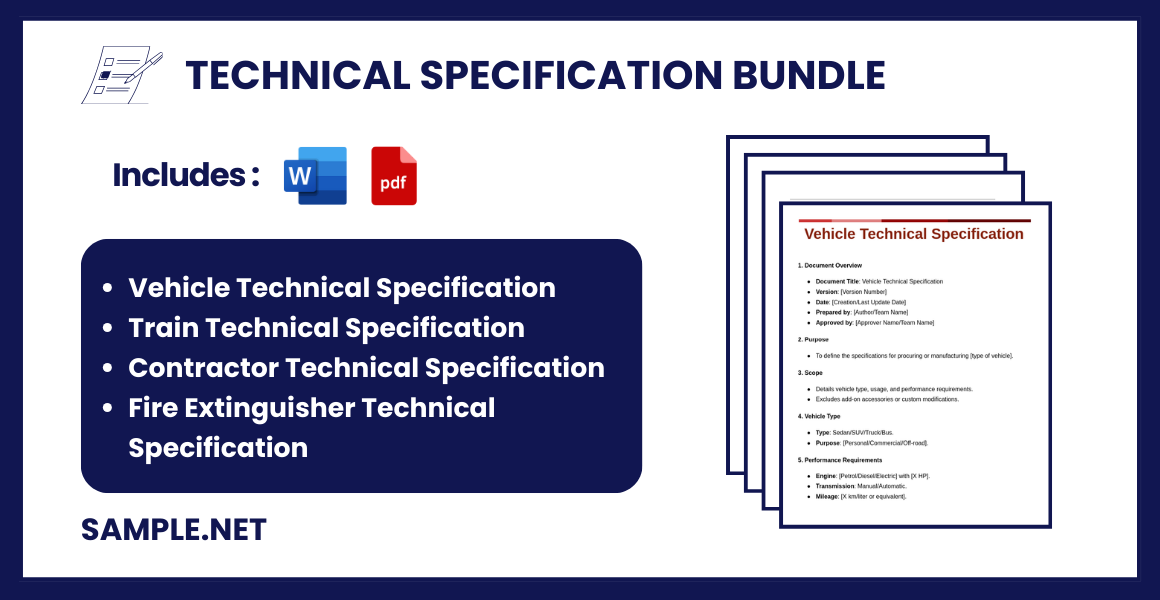
Download Technical Specification Bundle
Technical Specification Format
1. Document Overview
- Document Title: [Title of the Specification]
- Version: [Version Number]
- Date: [Date of Creation/Last Update]
- Prepared by: [Author’s Name/Team Name]
- Approved by: [Approver’s Name/Team Name]
2. Purpose
- A brief explanation of the purpose of this specification and the product/component it describes.
3. Scope
- Define the boundaries of the specification.
- Mention what is included and excluded.
- List stakeholders or impacted parties.
4. System Overview
- High-level description of the system/component.
- Use diagrams, charts, or models (if applicable).
5. Functional Requirements
- Requirement ID: [Unique Identifier]
- Description: [Detailed explanation of the requirement]
- Priority: [High/Medium/Low]
- Dependencies: [List any dependencies]
Example:
| ID | Description | Priority | Dependencies |
|---|---|---|---|
| FR-01 | Login functionality | High | None |
| FR-02 | Password reset feature | Medium | FR-01 |
6. Non-Functional Requirements
- Performance: [Speed, latency, throughput requirements]
- Reliability: [Uptime or failure tolerance]
- Security: [Data protection and security measures]
- Scalability: [Scalability requirements]
- Other: [Usability, maintainability, etc.]
7. Architecture and Design
- System Architecture: [Include diagrams and detailed architecture]
- Components: [List and explain individual components/modules]
- Data Flow: [Describe how data flows through the system]
- Integration Points: [APIs, external systems, etc.]
8. Technical Details
- Programming Languages: [Languages used in development]
- Frameworks/Tools: [Frameworks or tools being used]
- Database Details: [Database type, version, schema overview]
- Infrastructure: [Servers, cloud services, networks]
9. User Interface (UI)
- Wireframes: [Add any mockups or wireframes]
- UI Components: [Describe UI features and interactions]
10. Testing Requirements
- Test Cases: [Details of testing scenarios]
- Performance Testing: [Performance benchmarks]
- Security Testing: [Any specific security tests]
- Tools: [Testing tools being used]
11. Risks and Assumptions
- Risks: [Potential risks and mitigation strategies]
- Assumptions: [Any assumptions made during the specification]
12. Implementation Plan
- Timeline: [Expected timeline or milestones]
- Team Involved: [Team responsibilities]
- Budget: [Estimated budget]
13. References
- [List all references like API documentation, design guides, or standards]
14. Appendices
- Add any additional supporting information or documents.
Technical Specification Samples
-
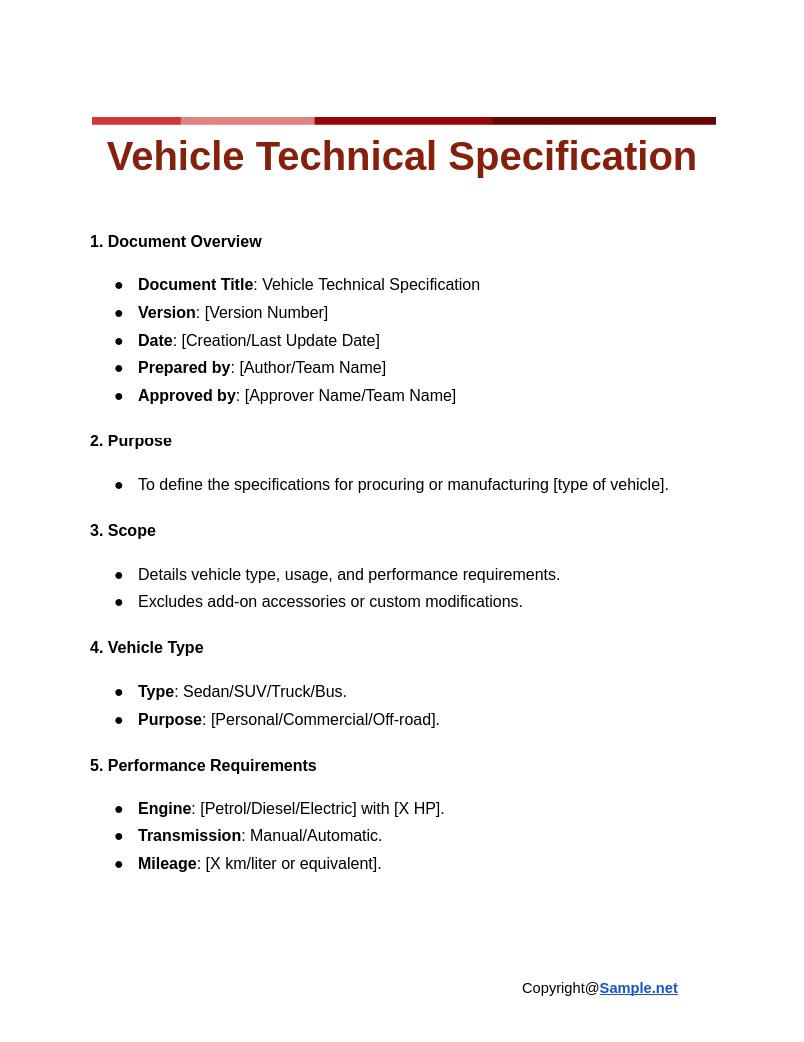
Vehicle Technical Specification
download now -
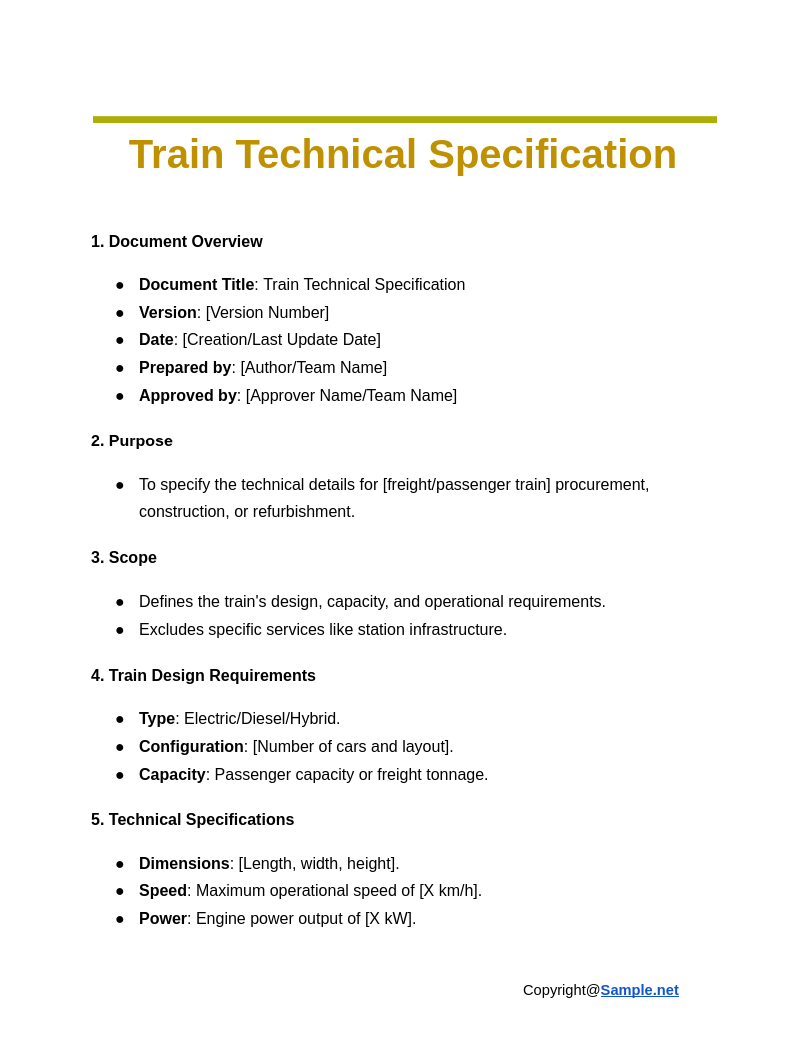
Train Technical Specification
download now -
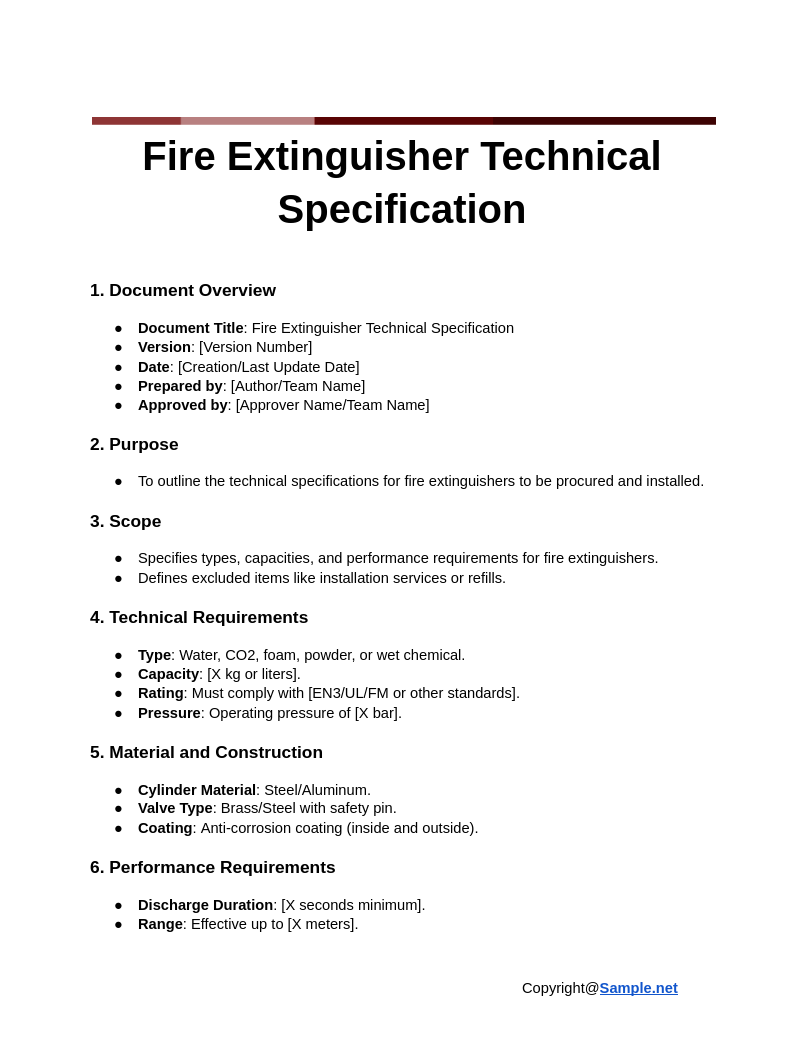
Fire Extinguisher Technical Specification
download now -
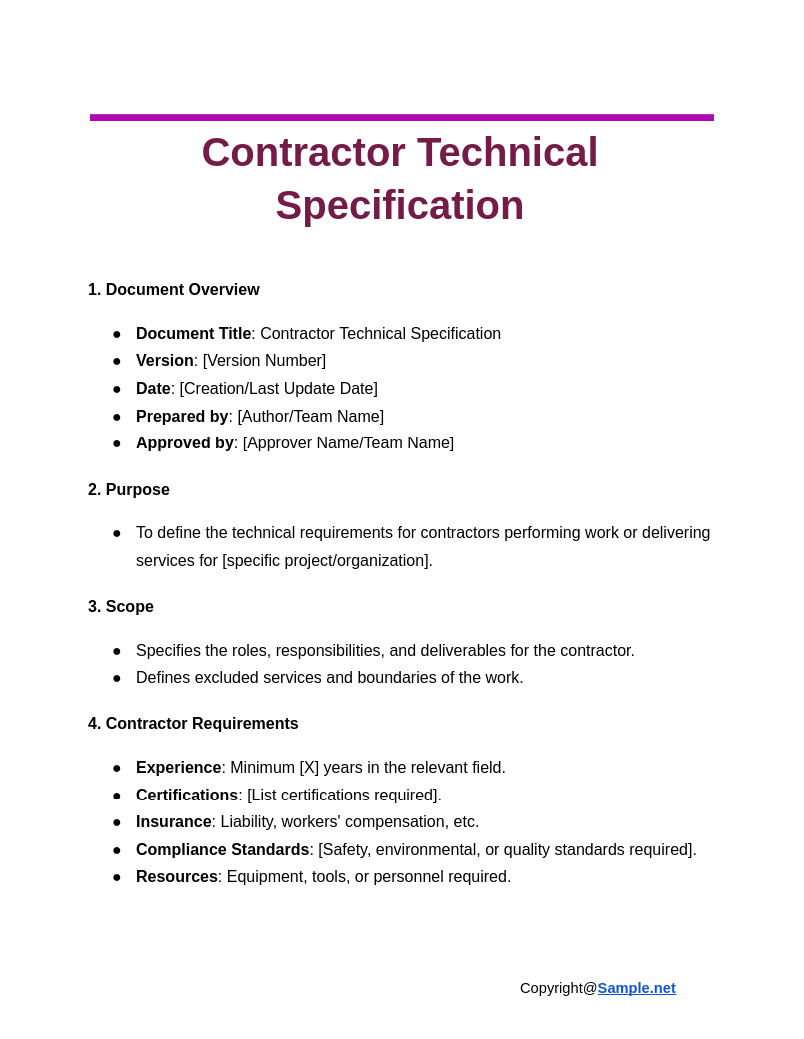
Contractor Technical Specification
download now -
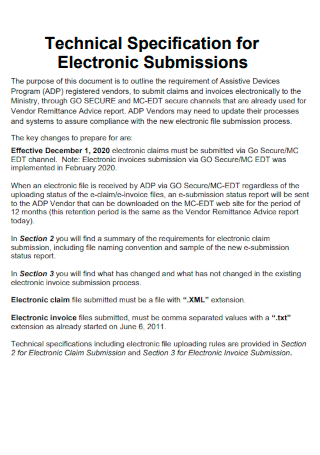
Technical Specification for Electronic Submissions
download now -
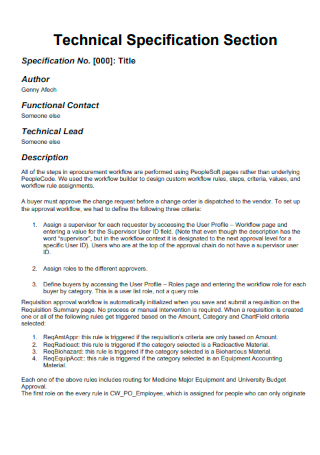
Technical Specification Section
download now -
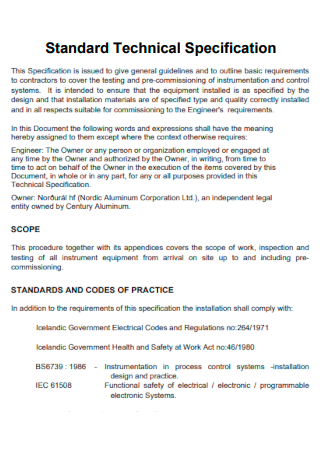
Standard Technical Specification
download now -
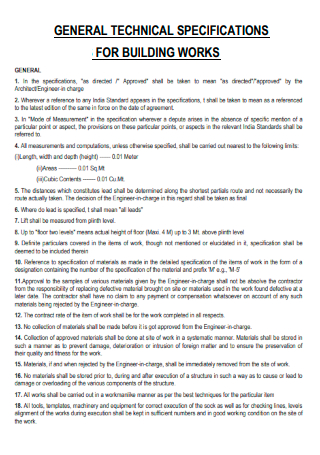
General Technical Specification for Building Works
download now -
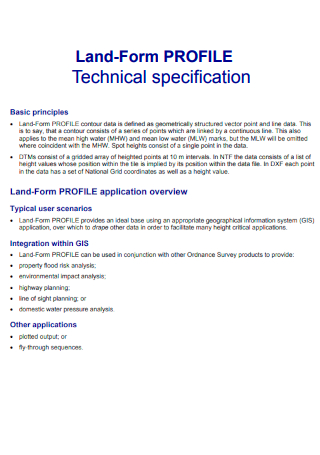
Land Form Profile Technical Specification
download now -
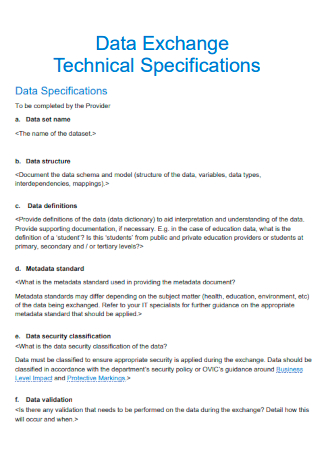
Data Exchange Technical Specification
download now -
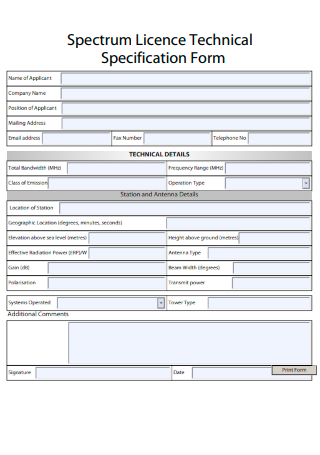
Spectrum Licence Technical Specification Form
download now -
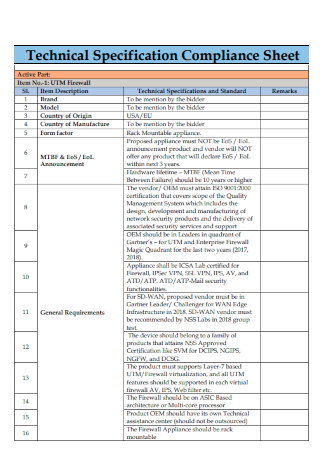
Technical Specification Compliance Sheet
download now -
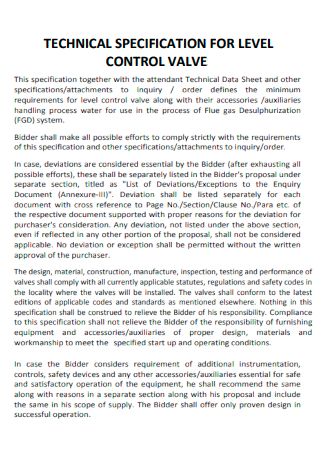
Technical Specification for Level Control Valve
download now -
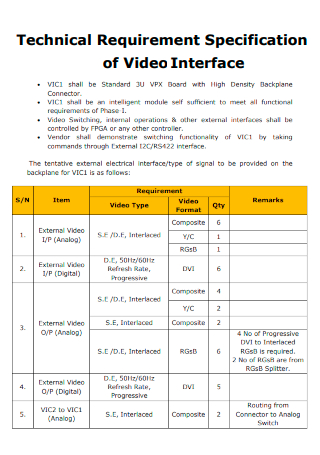
Technical Requirement Specification of Video Interface
download now -
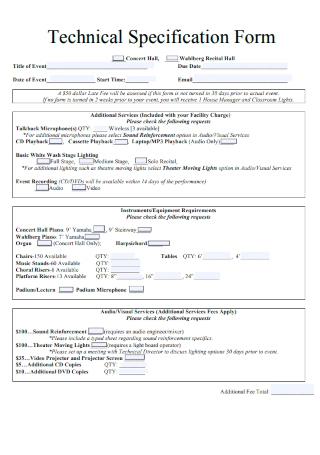
Technical Specification Form
download now -
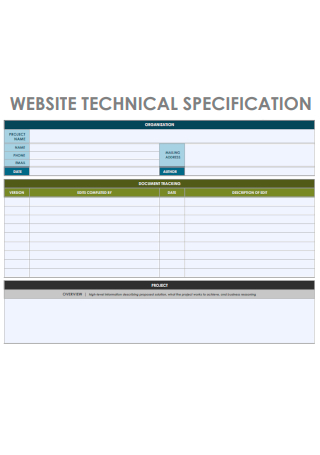
Website Technical Specification
download now -
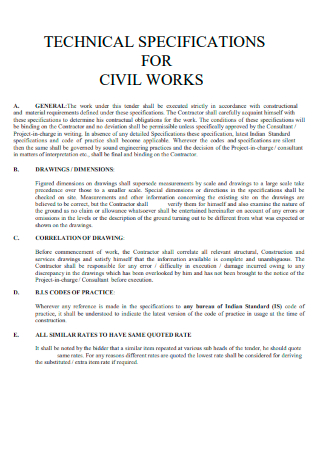
Technical Specification for Civil Works
download now -
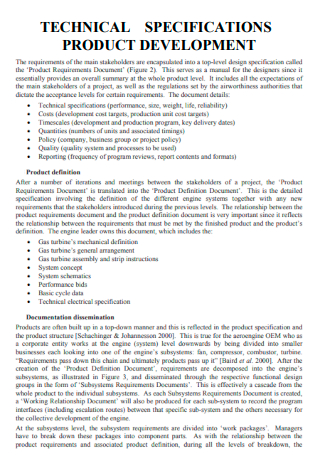
Technical Specification Product Development
download now -
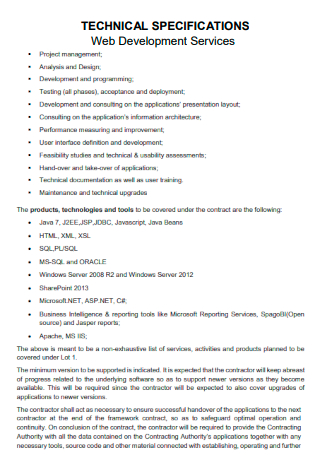
Technical Specification Web Development Services
download now -
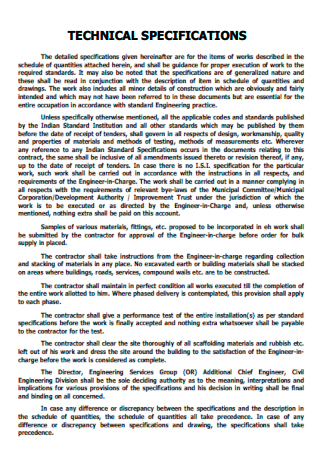
Sample Technical Specification
download now -
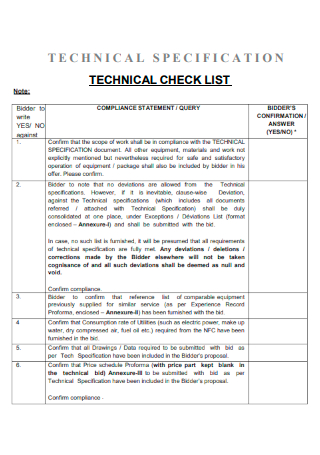
Technical Specification Technical Checklist
download now -
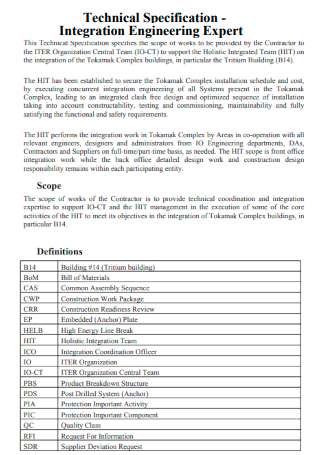
Technical Specification Integration Engineering Expert
download now -
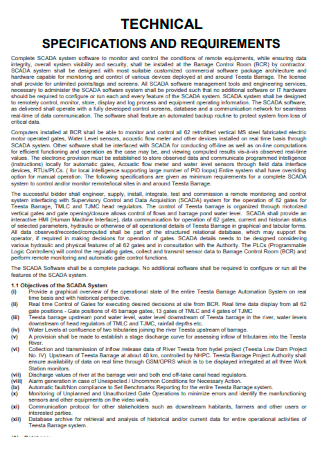
Technical Specification and Requirements
download now -
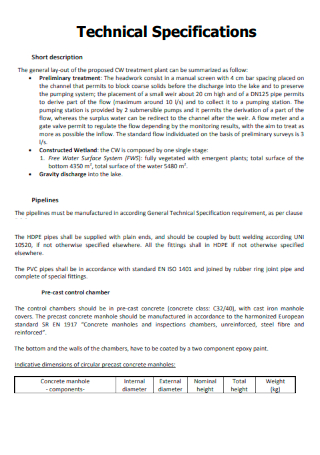
Basic Technical Specification
download now -
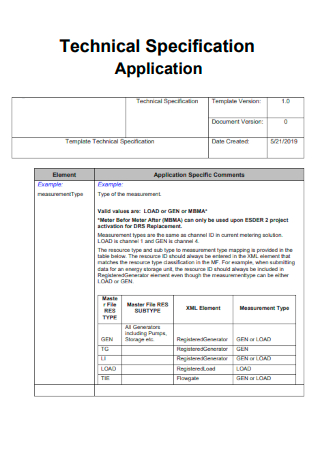
Technical Specification Application
download now
What is a Technical Specification?
A technical specification is a detailed document that outlines the technical requirements, features, and functionalities of a product, system, or project. It serves as a blueprint to guide developers, engineers, or manufacturers in creating a product or executing a project. By offering precise details, it minimizes misunderstandings, ensures compliance with standards, and sets clear expectations. Technical specifications are essential in industries such as software development, construction, and manufacturing, where precision and adherence to guidelines are crucial for success. You can also see more on Technical Compliance Statement.
Components of a Technical Specification
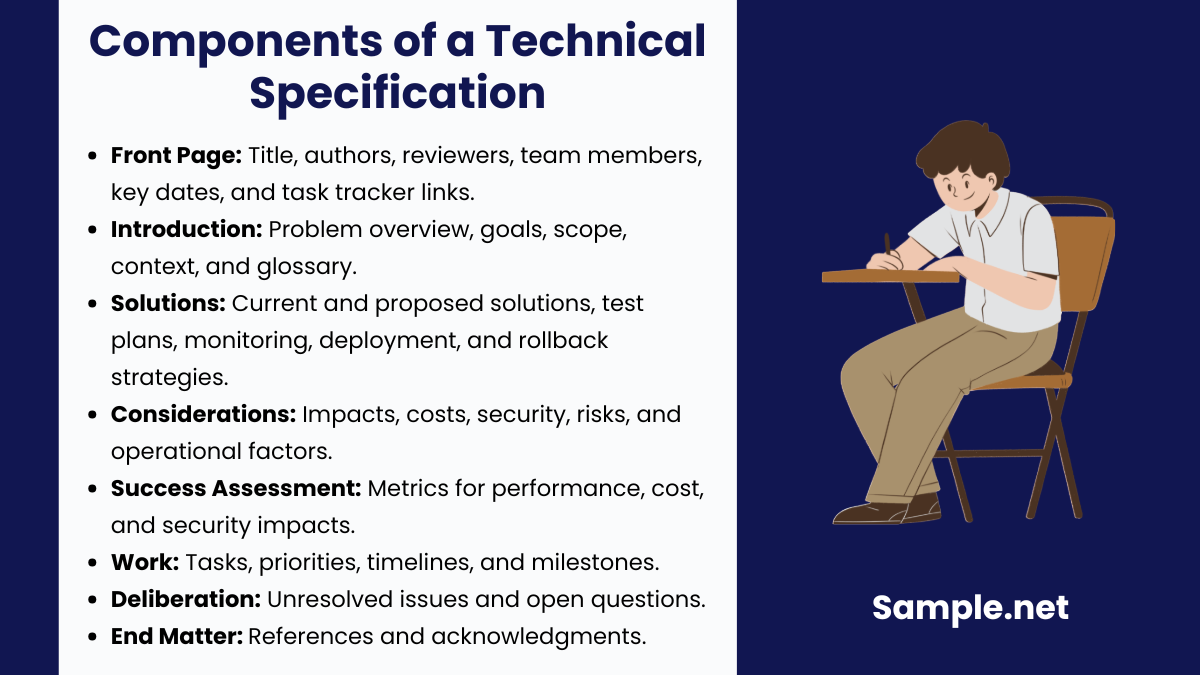
A technical specification is a document beneficial to engineers and developers when developing or creating a product or a project. There is an extensive list of requirements and problems that companies aim to solve, with every organization unique in producing exclusive work cultures with their employees. Each presented solution from a company is according to the standards the organization sets within teams and departments. As such, each technical specification is unique on its own. Read the section below for the components of a technical specification document.
How to Create a Technical Specification
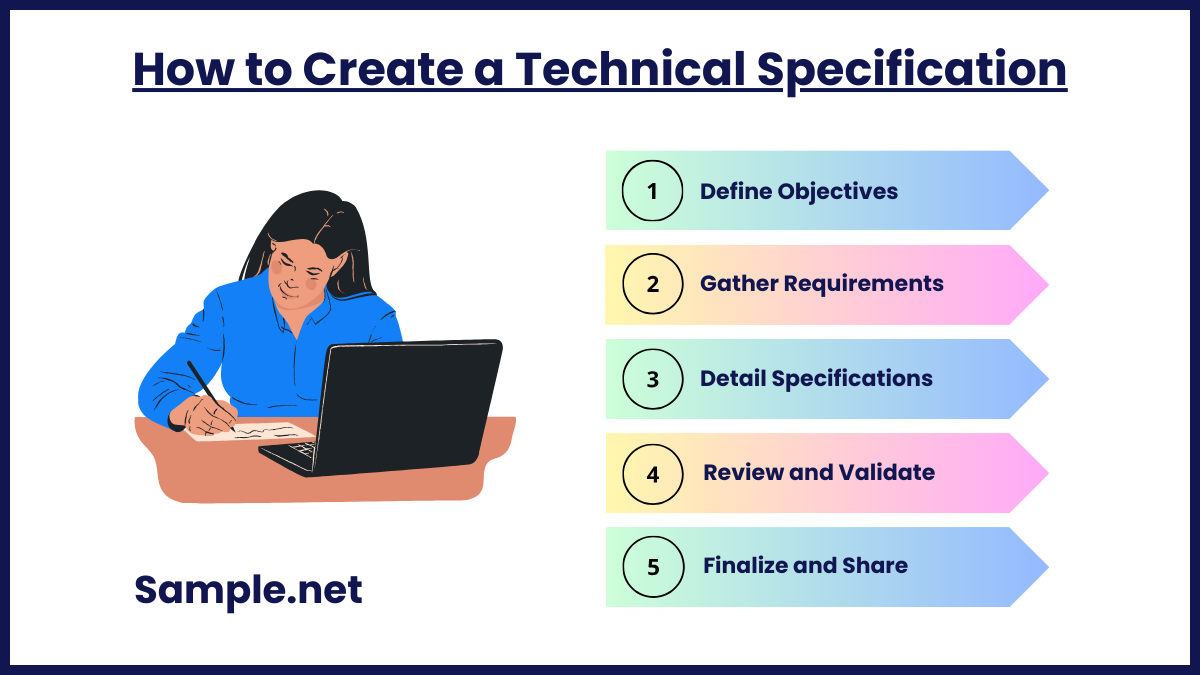
Step 1: Define Objectives
Start by identifying the project’s purpose and objectives. Clearly state what the product or system is intended to achieve. For example, in a software project, outline the main functionalities, user goals, and expected outcomes. Ensure all objectives align with stakeholder expectations.
Step 2: Gather Requirements
Collaborate with stakeholders to collect technical and functional requirements. This involves identifying necessary materials, tools, or technologies. For instance, in a manufacturing project, specify the type of materials, their quantity, and any unique attributes required. You can also see more on Bid Proposals.
Step 3: Detail Specifications
Document the specifications comprehensively, including performance criteria, dimensions, safety guidelines, and compliance standards. Ensure the details are unambiguous and supported by diagrams or tables, if necessary, for better clarity.
Step 4: Review and Validate
Share the draft with stakeholders for feedback and validation. Ensure it aligns with business goals, technical feasibility, and industry standards. Revisions may be necessary to address ambiguities or gaps. You can also see more on Project Timelines.
Step 5: Finalize and Share
Once approved, finalize the document and distribute it to all relevant teams. Use a centralized platform to ensure consistent access and updates. A finalized technical specification becomes the foundation for executing the project efficiently.
Technical specifications are essential for turning concepts into reality. By providing detailed guidelines and aligning all stakeholders, they ensure that projects are executed seamlessly and meet quality standards. A well-crafted technical specification minimizes errors, ensures compliance, and saves time and costs. Whether you’re developing software or building a product, having a clear specification is critical for success. It acts as a communication tool that bridges gaps between vision and execution. You can also see more on Crtical Path.
FAQs
What are the types of technical specification documents?
There are two types or classifications of technical specifications: open and closed specifications. When constructing technical specifications, they contain open specifications representing the parts of the document that tells the builders or constructors the definitive requirements without adding specific details. They are referred to as open specifications because the project process is flexible as long as they meet principal requirements. For closed specifications, explanations are much more detailed. It explains all the materials, tools, designs, and technologies to use, along with details on the requirements to complete the project.
Why are technical specifications important?
Technical specifications are necessary documents for organizations because they guarantee that every personnel or team member agrees on specific requirements or project goals. A technical specification can ensure that what the team plans or develops to create is possible, covering all the necessary bases down to the last detail. The document also provides space for open-ended questions to identify problems and gauge their impact on the project. You can also see more on Brand Audit.
What are the main components of a technical specification?
A technical specification must contain a front matter or front page, introduction, solutions, considerations, success measures and evaluations, work, deliberations, and end matter.
What are common challenges in creating a technical specification?
Challenges include miscommunication, incomplete requirements gathering, and conflicting stakeholder expectations. Overcoming these requires thorough collaboration and iterative reviews. You can also see more on Construction Estimate.
How do functional and performance specifications differ?
Functional specifications define what the system or product should do, focusing on user needs and functionalities. Performance specifications detail how well it should perform, such as speed, reliability, or efficiency.
What role do technical specifications play in quality assurance?
They set clear benchmarks and standards for quality, providing measurable criteria that teams can use during testing and validation phases to ensure the final output meets expectations. You can also see more on Process Documentation.
